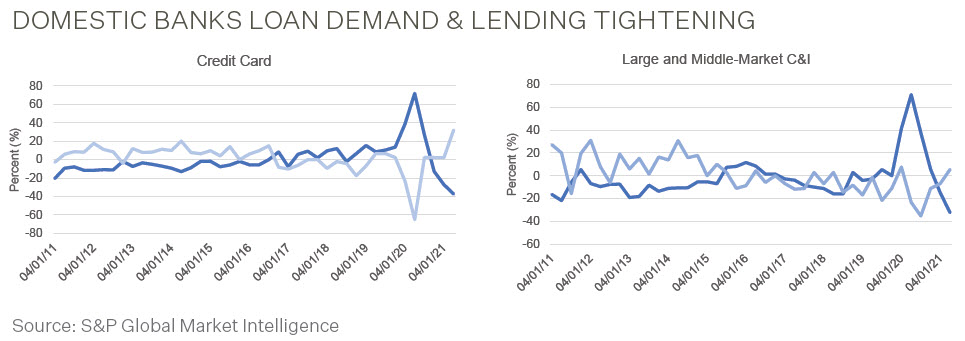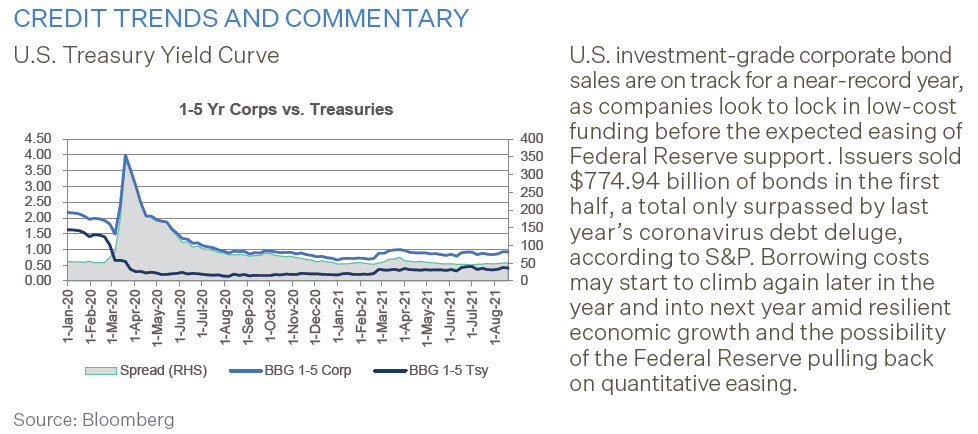
Recent News
Businesses & Consumers Report Stronger Loan Demand, Banks Await
A large majority of U.S. community banks reported year-over-year declines in loan balances in the second quarter. Loan growth has been largely suppressed across the industry as excess savings has translated to less need for credit by both consumers and businesses. While the rise in deposits typically translates to higher-yielding loan opportunities, a growing number of banks are coming to terms with the likelihood that at least a portion of the excess liquidity could become a long-term fixture on their balance sheets as margins are further compressed. Among banks with less than $10 billion in total assets having reported earnings as of July 23rd, 90% reported a year-over-year decline in loans with a median drop of 1.2%. However, more business owners and consumers are looking for loans in the third quarter, and U.S. banks are more than ready to add to their loan books. A Federal Reserve survey of senior loan officers, released August 2nd, showed stronger demand for nearly all loans in the third quarter. The Fed’s loan officer survey suggested a turning point for loan growth could be on the horizon. Lenders reported stronger demand across several loan types (see below). Meanwhile, bankers reported that their companies were easing underwriting standards for the same products, suggesting a return in credit standards to pre-pandemic levels.

Banking Trends
For the 4,951 FDIC-insured commercial banks and savings institutions, second quarter 2021 net income totaled $70.4 billion, a decrease of $6.4 billion (8.3%) from the linked quarter and up $51.9 billion (281%) from a year ago. The quarterly increase in net income was primarily attributable to a provision expense of $-10.8 billion, declining $73 billion from the year ago quarter. Two-thirds (66.4%) of all banks reported year-over-year increases in quarterly net income, and the percentage of unprofitable banks in the second quarter dropped from 5.6% a year ago to 4.2%. Average net interest margin (NIM) was down 31 basis points from a year ago to 2.50%, the lowest level on record in the Quarterly Banking Profile (QBP).
Quarterly provisions for credit losses totaled $-10.8 billion. More than three-fifths of all institutions (63.3%) reported lower provisions compared with the year-ago quarter. Noncurrent balances for total loans and leases decreased $13.2 billion (10.8%) from the first quarter of 2021. The net charge-off rate declined by 30 basis points from a year ago to 0.27%, a record low. The annual decrease in net charge-offs was attributable to a $3.3 billion (39.8%) reduction in credit card net charge-offs and another $2.9 billion (69.7%) reduction in commercial and industrial net charge-offs.
Total assets rose by $224.8 billion (1%) from the previous quarter. Cash and balances due from depository institutions declined by $108 billion (3%). Securities holdings rose by quarterly dollar increase of $248.9 billion (4.5%). Total equity capital increased by $55.3 billion (2.5%) from the previous quarter. Quarterly net income in the second quarter totaled $70.4 billion, exceeding declared dividends of $36.5 billion, contributing $33.9 billion to retained earnings. The number of institutions on the FDIC’s “Problem List” declined by four from the previous quarter to 51. During the quarter, 3 new charters were added, 28 institutions were absorbed by mergers, and no banks failed.
Source: FDIC: Quarterly Banking Profile
The PMA Report
The PMA Credit Research Process
The PMA Process includes four steps which begin with gathering data and analyzing a bank’s credit quality and continues with ongoing risk management throughout the life of a deposit. The process helps public funds investors avoid repayment, reinvestment and reputation risk that may be associated with a bank failure.
Step 2: Data Analysis – Qualitative
Bank credit analysis requires insight into a bank’s balance sheet, management and regulatory standing. The composition and quality of assets and liabilities are reviewed, as any balance sheet concentrations can provide insight into a bank’s risk profile. To determine regulatory standing, analysts search for bank enforcement actions on the FDIC, OCC and Federal Reserve Bank websites. Additionally, if the company is publicly traded, a review of public Securities and Exchange Commission documents is completed.
Qualitative analysis also includes an assessment of industry performance and economic conditions. Banking industry developments are monitored daily and analysts conduct sector analysis within the banking industry to better understand business segments such as commercial real estate, residential mortgages and credit card lending. Economic trends that may affect bank performance are also monitored.